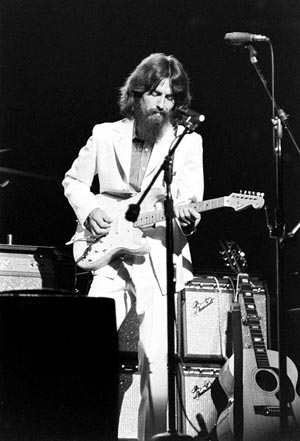There’s a lot of confusion around today about single-ended guitar amps. Put simply, every tube guitar amp employs either a single-ended or ‘push-pull’ power stage. It’s one or the other. I must say that I’m biased (pardon the pun) towards the former. If your all-tube guitar amp is over 15 watts then chances are you’re in push-pull territory. If not, then you might be lucky, maybe it’s single-ended. This post, consisting of three links (each increasingly detailed) is, in part, dedicated to clearing up some of the more common misconceptions.
Single-ended amps were once considered budget-priced, low-wattage amps for ‘student’ use. Their internal circuits were simpler than their higher-output, push-pull cousins and they also suffered from power-supply induced background hum (although some newer models – like mine (see photo below)- have since solved that problem using chokes, additional power filtering, premium-quality parts and, to increase their volume considerably, larger output transformers).
 It wasn’t that problems such as lower output and higher levels of background hum couldn’t be addressed back in the day. It’s just that manufacturers like Leo Fender didn’t see any reason to fix them since they weren’t ‘pro’ models (and doing so would eat into his tight profit margin). Well, that was until guitar legends such as Eric Clapton, Keith Richards, Joe Walsh and George Harrison discovered how single-ended amps provided sweet harmonic tone and distortion like no other amps. Now these amps are highly-prized collector’s items.
It wasn’t that problems such as lower output and higher levels of background hum couldn’t be addressed back in the day. It’s just that manufacturers like Leo Fender didn’t see any reason to fix them since they weren’t ‘pro’ models (and doing so would eat into his tight profit margin). Well, that was until guitar legends such as Eric Clapton, Keith Richards, Joe Walsh and George Harrison discovered how single-ended amps provided sweet harmonic tone and distortion like no other amps. Now these amps are highly-prized collector’s items.
As a generalisation, single-ended amps have a purer tone due to their shorter signal path, greater harmonic content present at the power tube stage, and a keen sense of responsiveness and expressiveness when compared to push-pull amps. However, they lack the bass response, (as well as the lower hum/greater sound pressure levels as mentioned above) of the push-pulls. They also dissipate much more heat (as do Class A amps in general). It must be remembered though, that despite being relatively inefficient, single-ended amps can still sound as loud as amps rated much higher in terms of power.
The first single-ended amp I owned was a beautiful 1960s Gibson GA-8 purchased from an American jazz guitarist living in Caloundra. Technically speaking, the amp was classed as “dual” (or parrallel) single-ended, meaning that it used two power tubes instead of the usual one. For many years, I sincerely regretted selling that amp, but I was bitten by the bug. Now I make my own single-ended amps (see picture).
If you’ve never tried a single-ended amp then you don’t know what you’re missing! A lot of guitarists I talk to are unaware of what single-ended amps are, and of those that have heard of them, most have never tried one. Be warned however, that what these beauties offer in terms of pure sound and very musical, touch responsiveness is accompanied by some (mostly charming) quirks worth exploring before deciding if they’re the right amp for you.

At the Concert for Bangladesh, George Harrison used a “wall” of 4 single-ended Fender Champs
1) This first link leads to an interesting and informative forum discussion thread regarding the pros and cons of single-ended tube guitar amps. Best quote: “Playing through a Class A circuit is very much like, having the guitar plugged into your Central Nervous System. ” Well said. (LENGTH: 3 pages):
https://www.thegearpage.net/board/index.php?threads/single-ended-amps-pros-cons.575398/
2) If you’re still a tad confused about what constitutes a single-ended, push-pull or Class A amp, then check out the following article (originally published in Guitar Player). In this online piece, Dave Hunter clears up some of the common misconceptions regarding these various approaches to tube amp design. It also deals with the topics of cathode biasing and negative feedback (LENGTH: 2088 words):
https://www.mojotone.com/blog/class-a-amps-what-they-are-and-what-they-are-not
Some more examples of single-ended tube guitar amps
3) Kudos to you if you’ve made it this far. And if perchance having read both links you still thirst for more (technical answers, explanations and…diagrams!) then the last link will well and truly fill your tube amp cup to the brim. This article by Eddie Vaughn is both informative and an entertaining read (LENGTH: 10 pages/10,000 words). After reading it you’ll be an expert single-ended (or push-pull) tube amp spotter. Bon chance.
http://www.x3mhc.no/dokumenter/SE-v-PP-Part1.pdf
Conclusion:
All things considered, it seems that factors such as single-ended/push-pull, power ratings or even bias methods can’t indicate an objectively ‘better’ or ‘worse’ sounding amp. One has to take into account what qualities matter most to you (and your chosen genre of music) and then just listen to the amp. More important perhaps, be aware of how you interact with the amp. When the day comes that you find an amp that’s responsive to your touch, and conversely, you to it, then this so often taken-for-granted front end of your signal chain will seem to become an extension of your body every bit as much as the guitar you are plugging into it.








